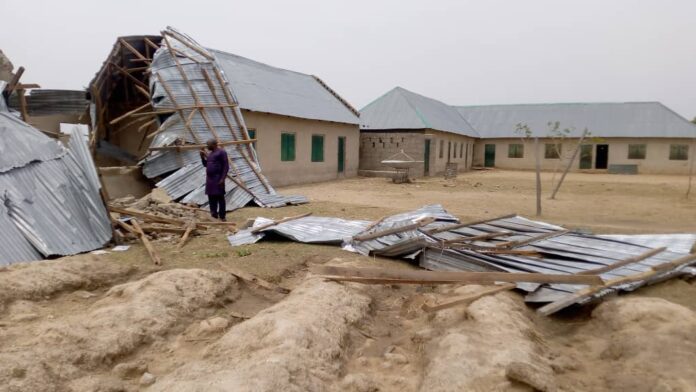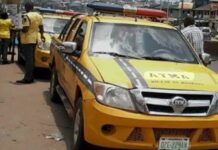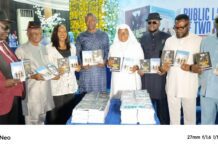Houses destroyed by rainstorm in Qua’an Pan local government area.
By Marie-Therese Nanlong
Jos – Public and private buildings as well as other properties worth millions of naira have been destroyed by rainstorm in many communities in Qua’an Pan Local Government Area of Plateau State.
Heavy downpour which according to residents started on Sunday night and lasted till the early hours of Monday morning, was accompanied by a heavy windstorm that blew off rooftops of several private homes and public buildings, rendering many families homeless.
Emmanuel Da’ar, a resident of Ba’ap said over 50 houses were destroyed even as public property including Police station, Primary Healthcare Centre and schools among others were also affected.
READ : Plateau State warns revenue agents against mounting roadblocks
However, the Chairman of the Council, Abdulmalik Haruna who had gone on a visit to the affected facilities lamented the havoc which he described as huge and stated that the Local Government Authority will take necessary steps to attract support from government agencies and private hands to assist the victims.
Haruna’s Senior Assistant, Media and Publicity, Mathias Dajan in a statement confirmed the Chairman personally went round some of the affected structures to ascertain the level of damage and has sympathized with the victims, urging them to accept the incident as an act of God.
HAVE YOU READ A BOOK TODAY?

He said, “the rains destroyed government structures such as the Legislative Chamber, Some Departmental Offices, some Staff Quarters, the NYSC Lodge, the Nigerian Police Force Divisional Headquarters, the Nigerian Security and Civil Defense Corps (NSCDC) Divisional Office, the Magistrate Court building, the Local Education Authority office, and Classroom blocks at Government Primary and Secondary Schools.
“Also affected are group and private structures including; the newly roofed Nigerian Union of Teachers NUT Club building, Private Primary and Secondary Schools, Shops, and several residential buildings, as well as economic trees, among others.”
















